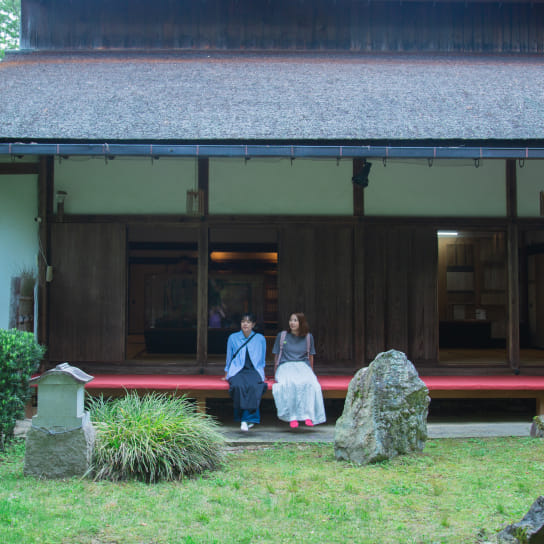Discovering Yoshinoyama: A Staff Getaway (Part II)
2025.10.16
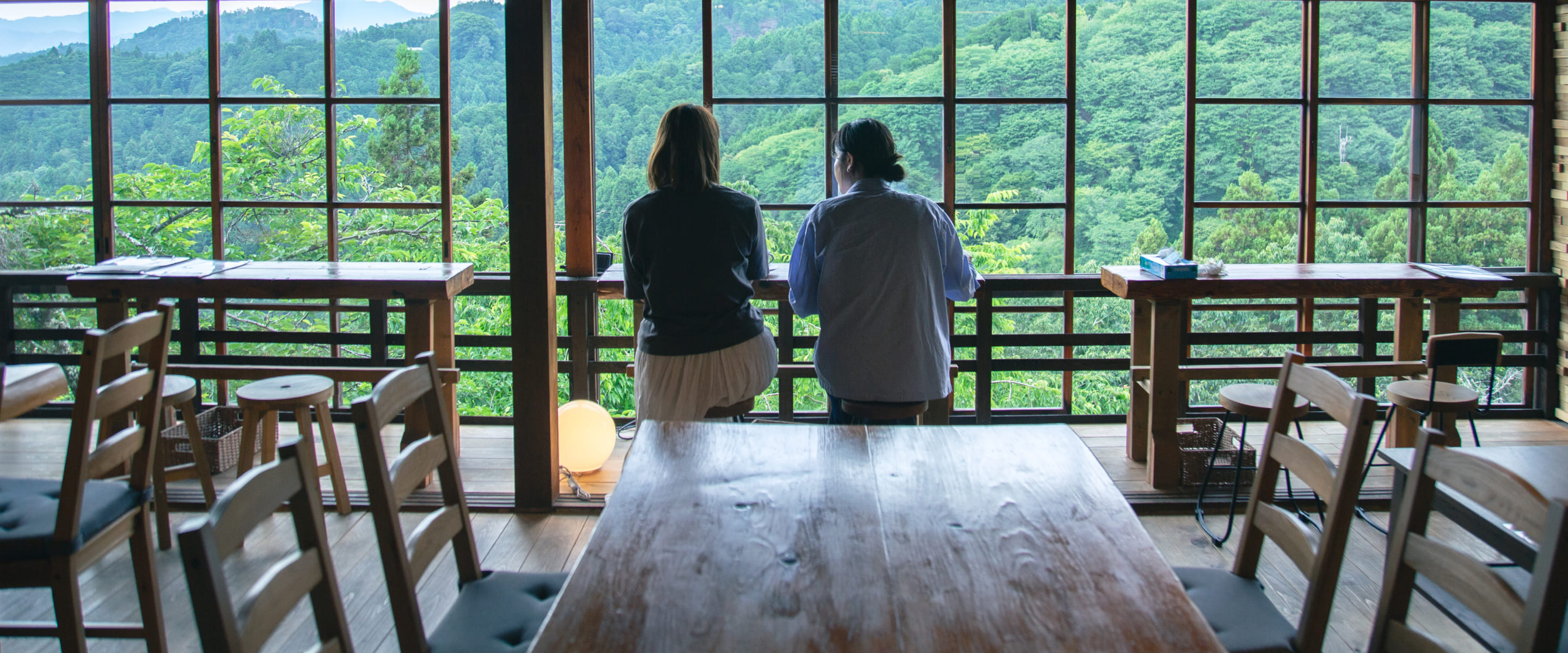
Continuing from Part 1, our staff dives deeper into the charms of Yoshinoyama in Nara.
Facing Yourself Through Ascetic Practice—and Receiving the Strongest Amulet
Our next stop was Sakuramotobō Temple, a site closely connected to En no Gyōja, the founder of Shugendō. Here, visitors can experience ascetic practices such as mountain training, meditation, and ritual ablutions.
This time, we joined the morning service, tried meditation, and practiced copying sutras and Buddhist images for the very first time.
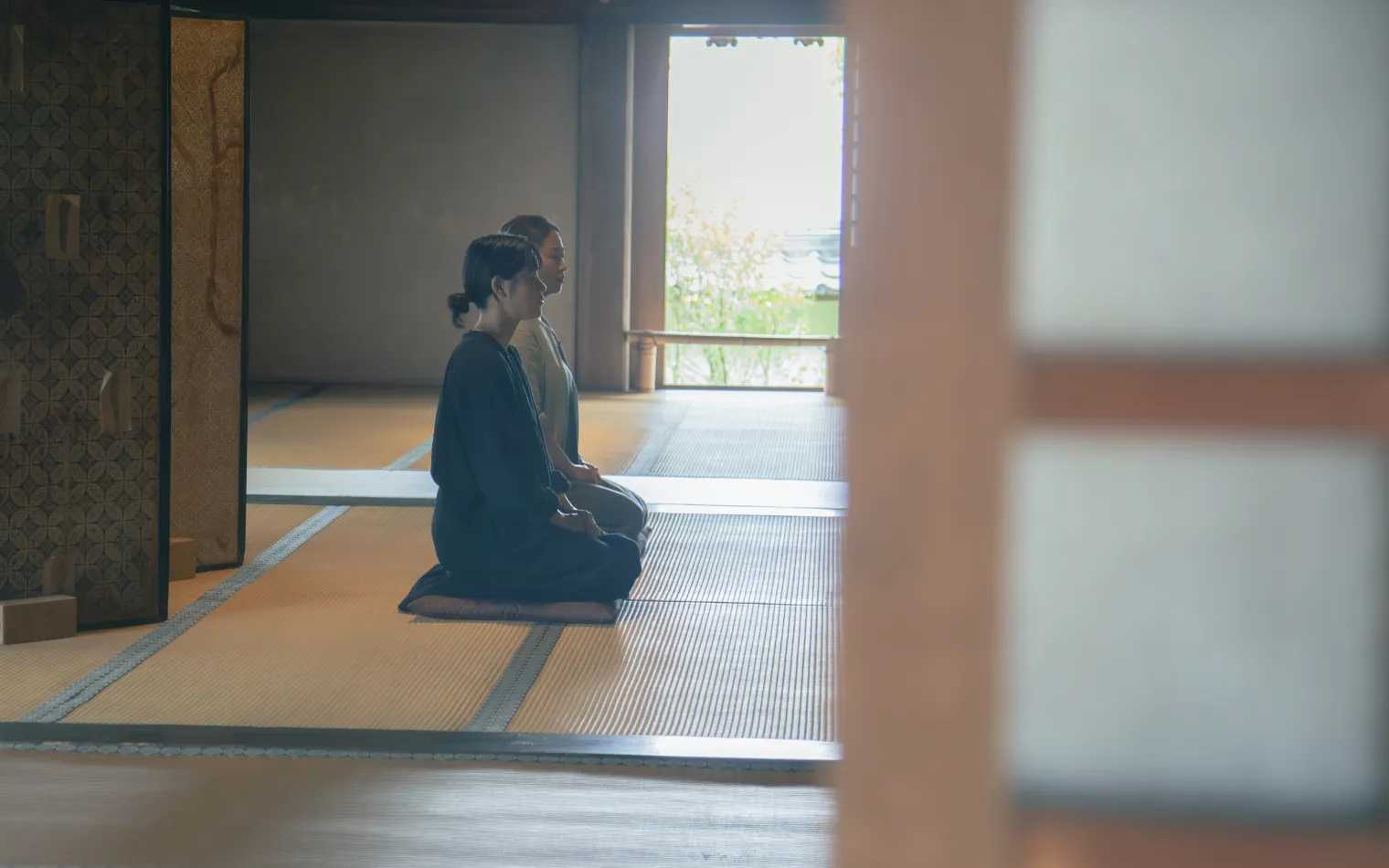
Away from the noise of daily life, we focused only on what was in front of us—simply facing ourselves in silence. At first, we worried about maintaining a formal kneeling posture, but were kindly advised to relax, which allowed us to concentrate fully.
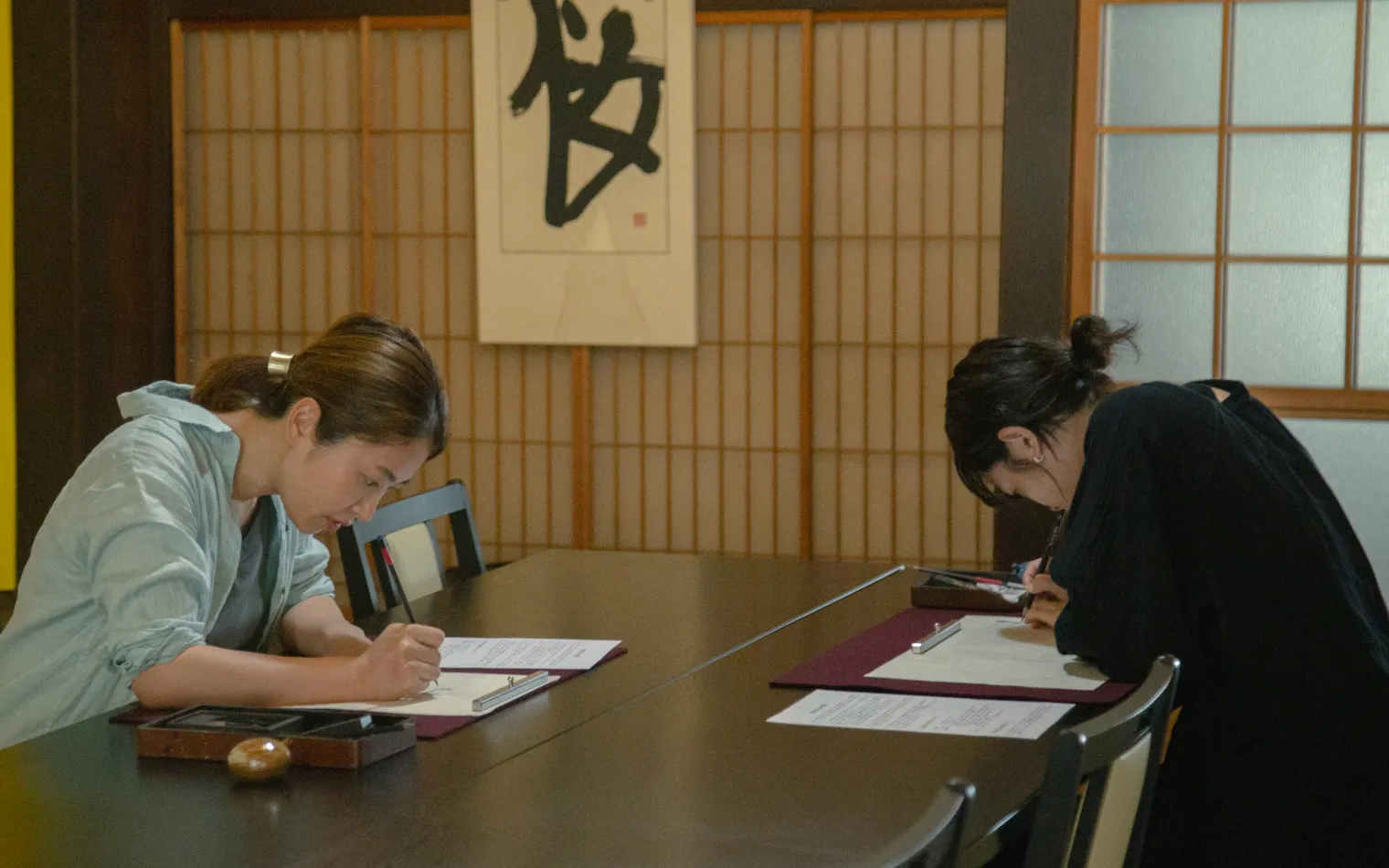
By the end, distracting thoughts had lifted, and we felt refreshed in both body and mind.
Another highlight of Sakuramotobō is the “Kujūmamori,” the strongest amulet, which is distributed from Ōminesanji Temple. Said to be a once-in-a-lifetime talisman, it is believed to save you in times of great crisis.
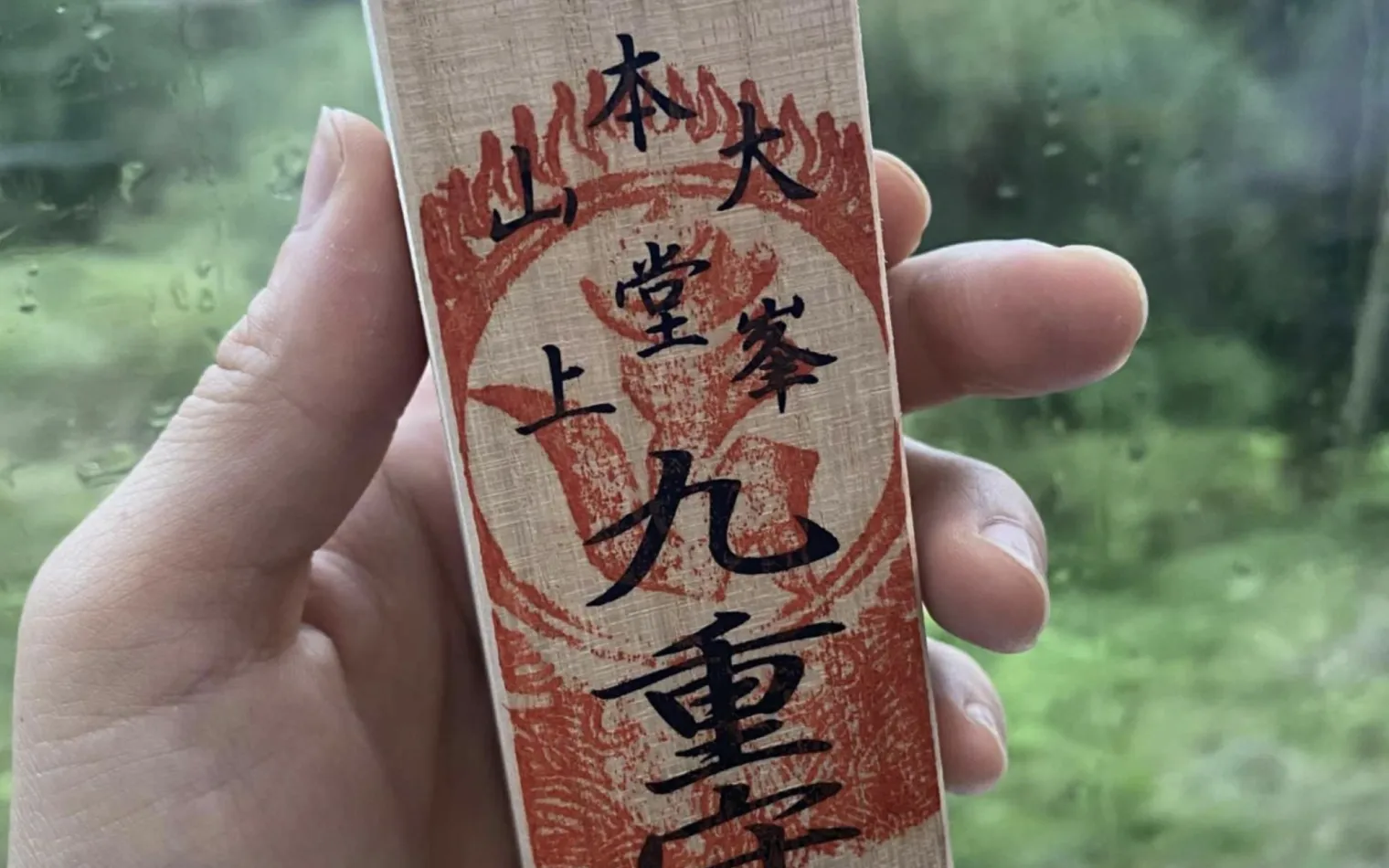
We obtained one, hoping never to need to open it—but grateful to have it in hand.
Tasting Yoshino Kudzu With a 10-Minute Shelf Life
Yoshino is famous for its kudzu root starch. The finest grade, known as Yoshino Honkuzu, is made entirely from starch extracted from kudzu roots grown in the Yoshino region. Its exceptional quality has earned it a reputation as a premium product.
At Nakai Shunpudō, visitors can both learn about kudzu and savor its pure flavor. Made only with Yoshino kudzu and water, the freshly prepared dish can be enjoyed on the spot.
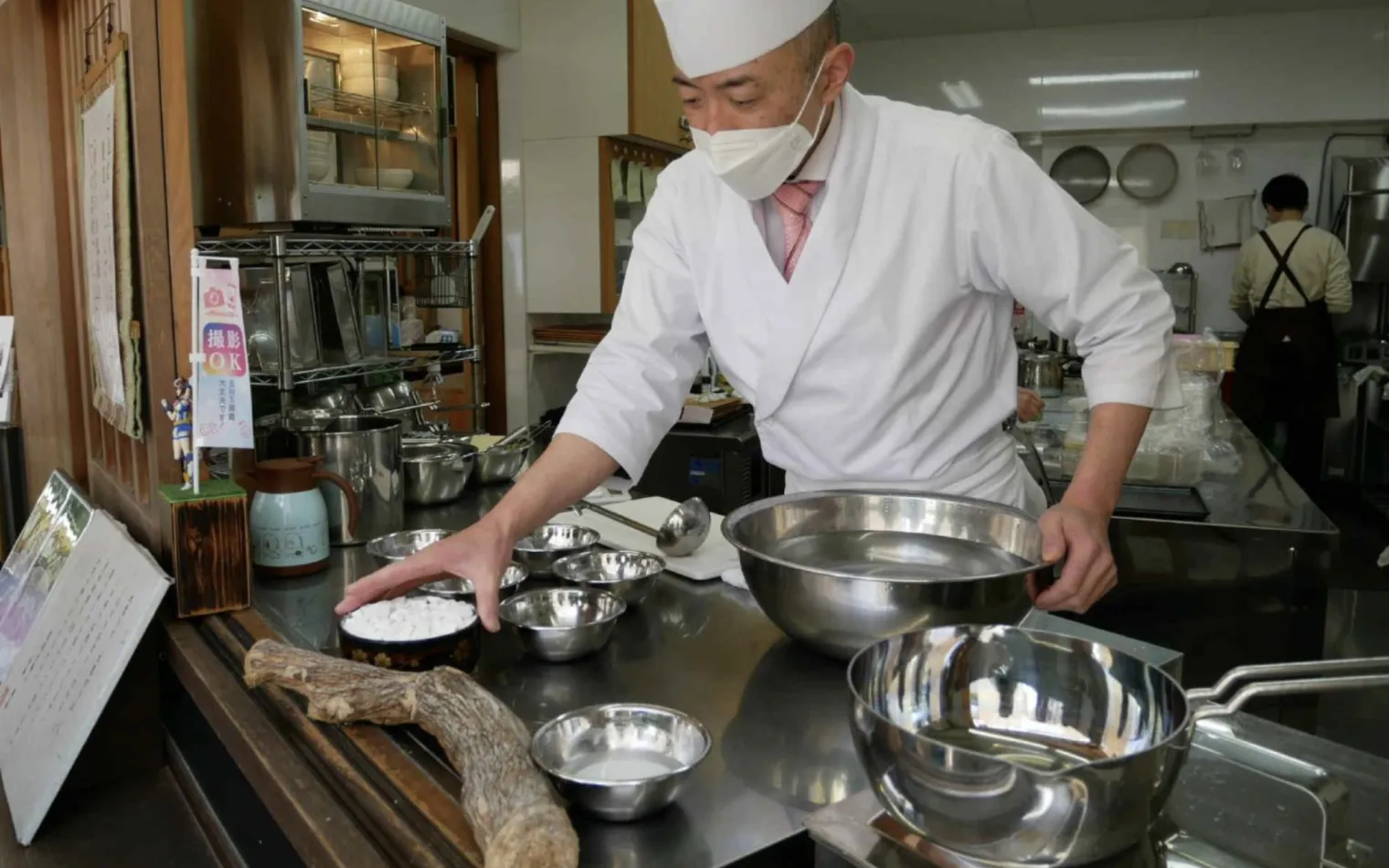
Watching the pure white powder transform into a beautiful, translucent dessert was a fleeting experience—because after just 10 minutes, it begins to turn white again.
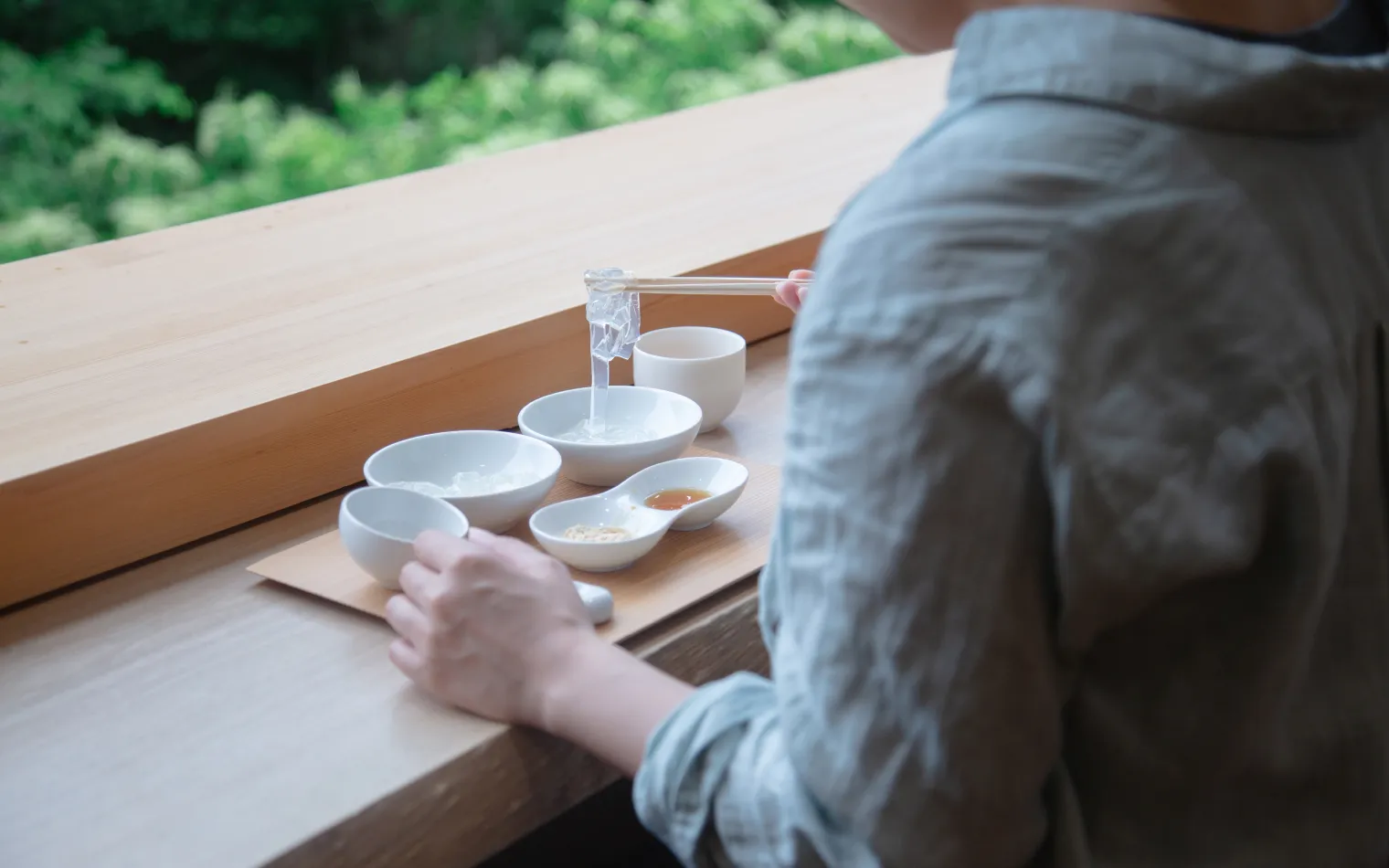
The chewy, silky texture was addictive, and knowing its history and craftsmanship made the taste even more profound. It was truly delicious.
Visiting the Symbol of Yoshinoyama: The Headquarters of Shugendō
Towering over Yoshinoyama is the Zao-dō Hall of Kinpusenji Temple, one of the largest wooden structures in Japan, second only to Tōdai-ji’s Great Buddha Hall.
The temple’s origins trace back to En no Gyōja, who practiced austerities here before enshrining Kongō Zaō Daigongen as the principal deity.
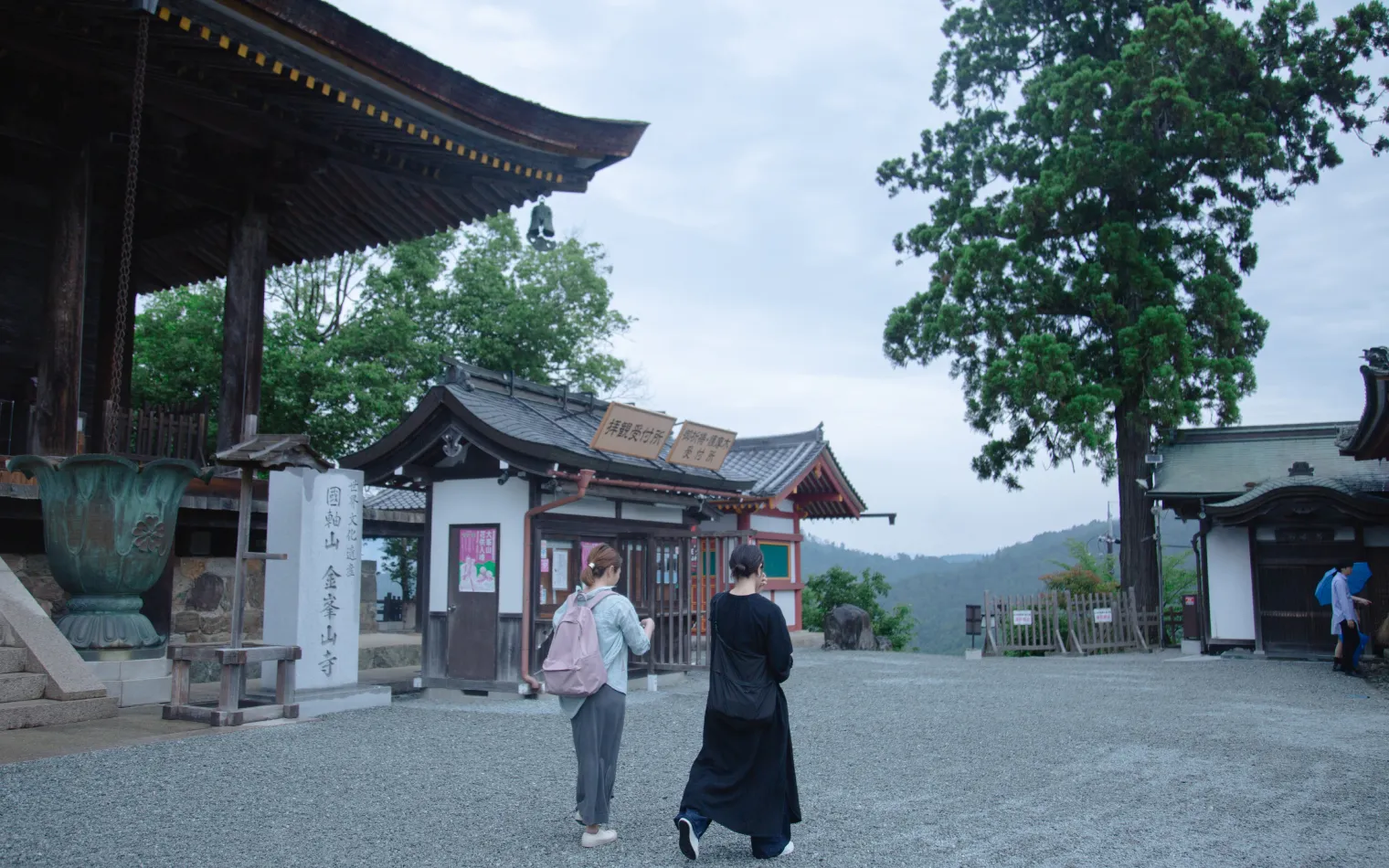
Today, it serves as the head temple of Shugendō, attracting practitioners and mountain ascetics from across the country.
Inside the Zao-dō, we were overwhelmed by the presence of numerous sacred statues, their sheer power almost leaping out at us.
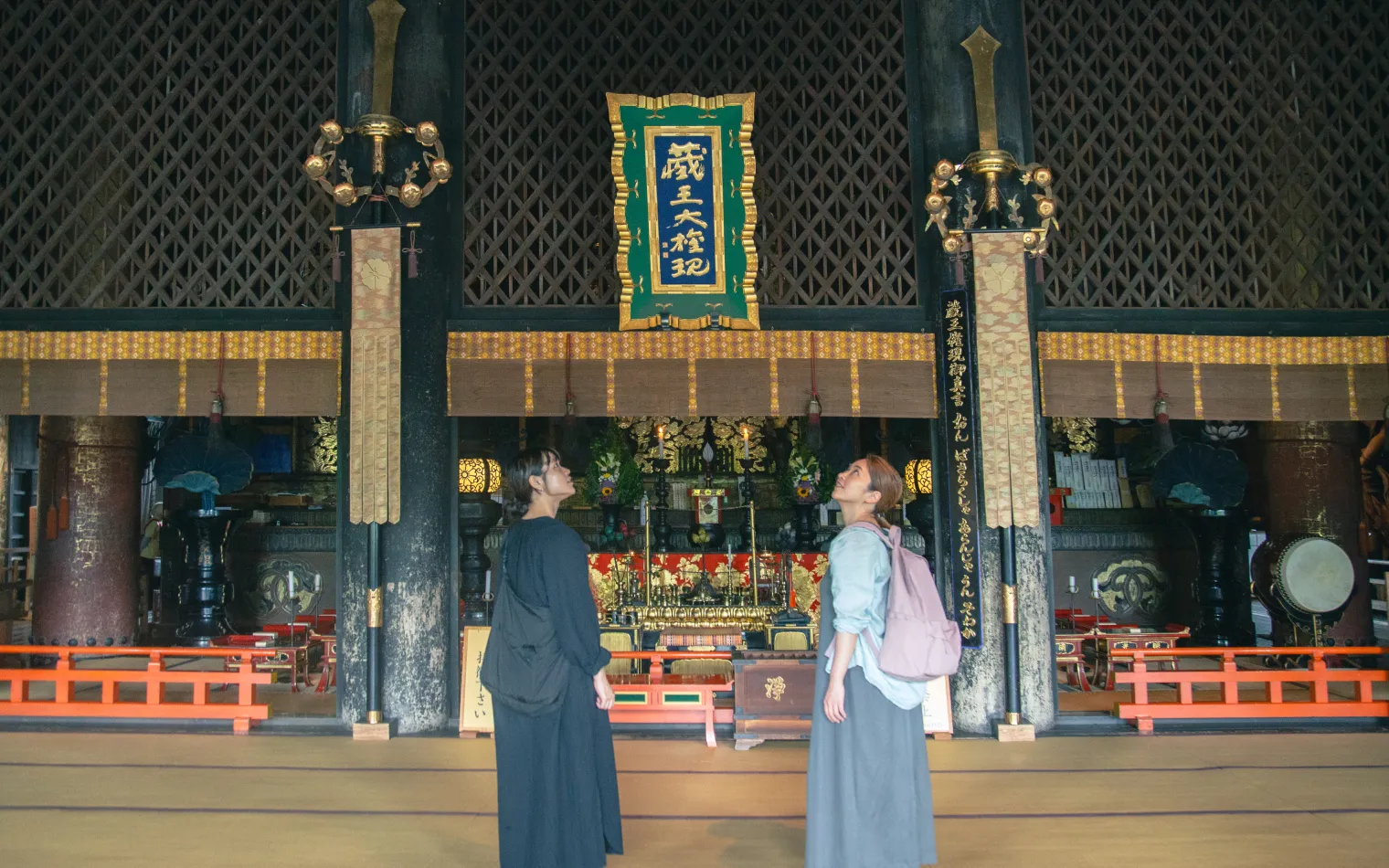
The temple’s three statues of Kongō Zaō Daigongen, considered secret Buddhas, are displayed only on special occasions. Unfortunately, they were not on view during our visit—but we left determined to return for the chance to see them someday.
Bringing Home Traditional Persimmon Leaf Sushi
Our final stop was Tatsumi, a shop that still handcrafts Yoshino’s famous persimmon leaf sushi in the traditional way.
Adjusting preparation methods daily according to temperature, humidity, and rice condition, the sushi is carefully pressed by hand rather than machine. The result is a plump, gentle texture that is increasingly rare today.
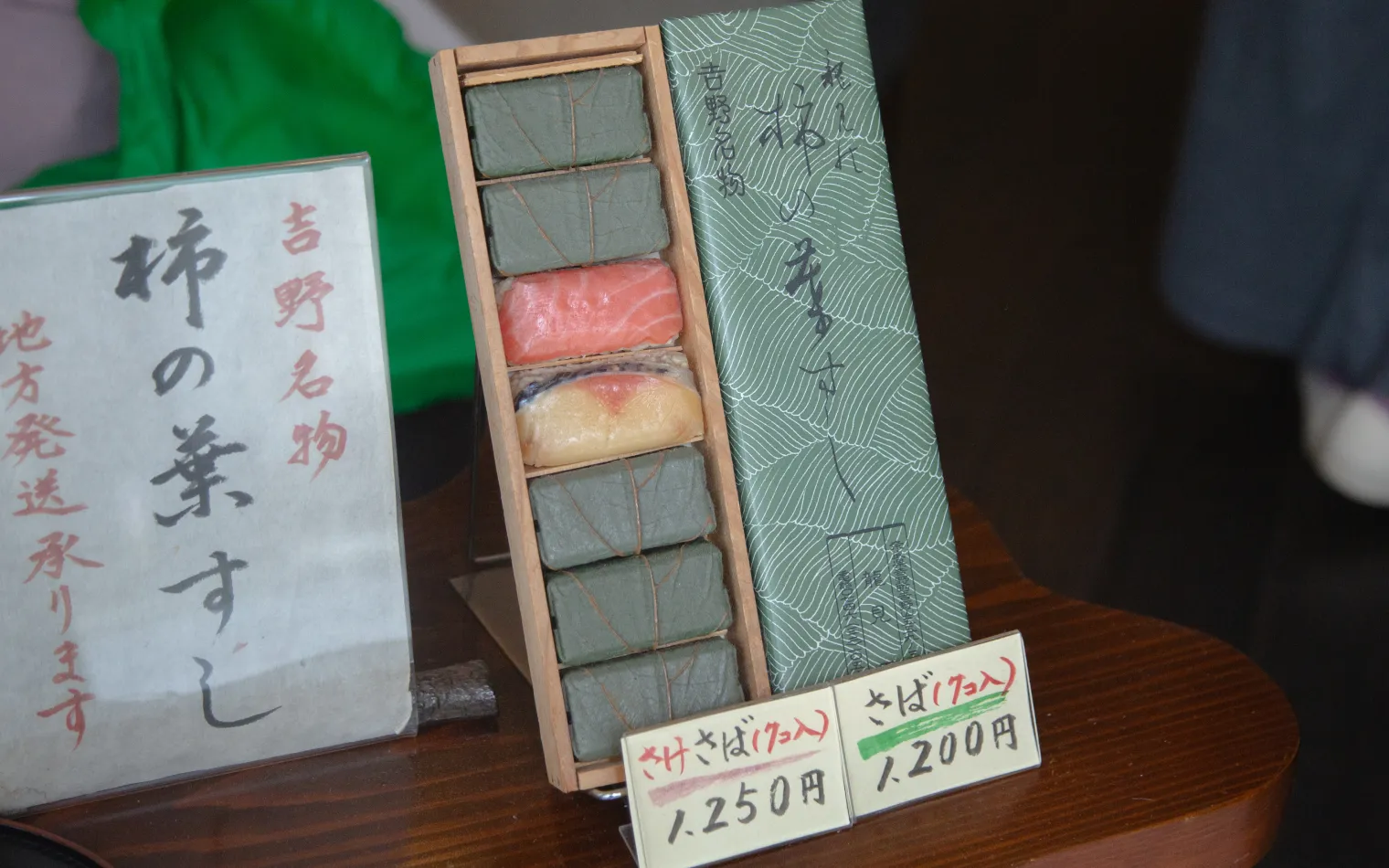
The vinegared rice was soft and flavorful, and we were told that letting the sushi sit for a while allows the taste of the salted mackerel to seep perfectly into the rice. We enjoyed it on the train ride home, reminiscing about our time in Yoshinoyama.
This trip was only a glimpse of what Yoshinoyama has to offer. Surrounded by mountains, it reveals entirely different beauty with each season—cherry blossoms in spring, lush greenery in summer, and snowy landscapes in winter.
We hope to return in different seasons and invite you to experience the peace and renewal that Yoshinoyama offers.
We look forward to welcoming you.
Related MUJI STAY Accommodation
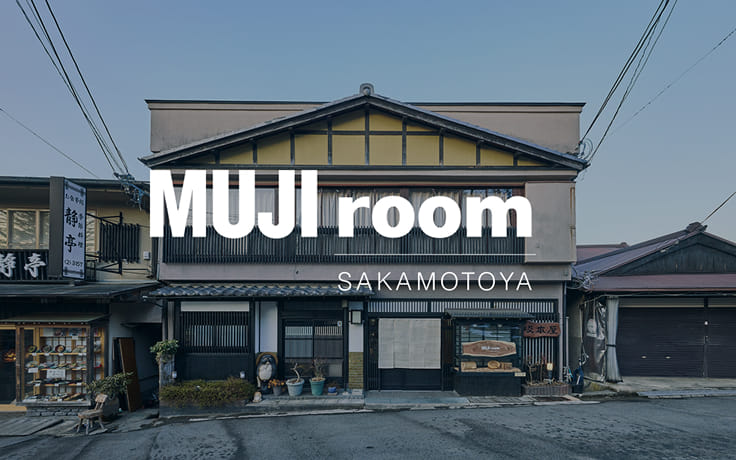
MUJI room SAKAMOTOYA
MUJI room SAKAMOTOYA: It is located in Yoshino Town, Nara Prefecture. MUJI has renovated three rooms of the 100-year-old traditional inn “SAKAMOTOYA.”
